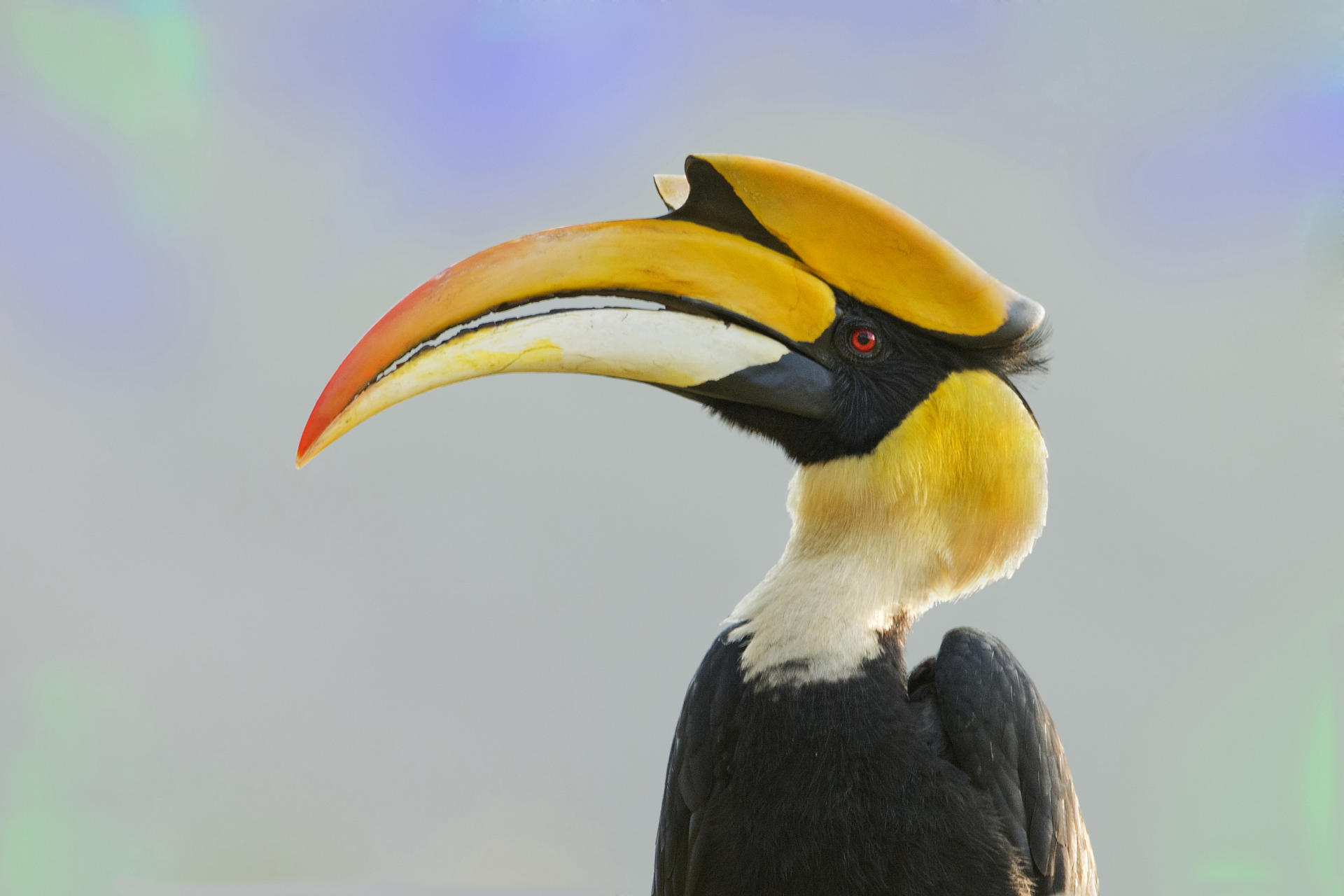
When it comes to magnificent and unique avian species, one cannot overlook the fascinating hornbills. These remarkable birds are known for their distinctive features, including their large beaks adorned with vibrant colors and elaborate casques on their heads. Found in various parts of the world, hornbills offer an incredible glimpse into the wonders of nature.
In this article, we will delve into the world of hornbills and explore 19 intriguing facts about these remarkable creatures. From their diverse habitats to their fascinating feeding habits, we will uncover the captivating details that make hornbills truly exceptional. So, get ready to embark on a journey of discovery and learn more about these captivating birds and the incredible traits that set them apart!
Key Takeaways:
- Hornbills are amazing birds with vibrant plumage, strong bills, and monogamous bonds. They play a crucial role in seed dispersal and are vital for tropical rainforest ecosystems.
- Conservation efforts are crucial to protect hornbills from habitat loss and illegal hunting. Their unique behaviors and cultural significance make them an inspiring subject for researchers and nature enthusiasts.
The Fascinating World of Hornbills
The 19 Hornbill Facts will take you on a journey to discover the wonders of these magnificent birds.
The Largest Hornbill Species
The Great Hornbill, one of the largest hornbill species, is known for its impressive size and distinctive casque atop its bill.
A Feast for the Eyes: Vibrant Plumage
Hornbills display a wide array of colors, with some species showcasing vivid plumage that adds a splash of beauty to their habitats.
The Heavy Bills and Hollow Casques
Hornbills have strong, curved bills that are adapted for various purposes, including foraging, feeding, and even creating resonating calls.
Pairs that are Bound for Life
Hornbills are known for their strong monogamous bonds, with pairs staying together for their entire lives and engaging in cooperative behaviors.
The Nesting Ritual: Sealing the Deal
During breeding season, female hornbills seal themselves into tree cavities using a mixture of mud, droppings, and food to protect their nests.
A Fruitful Diet
Although hornbills primarily feed on fruit, they also consume insects, small reptiles, and even birds’ eggs, making them opportunistic feeders.
Ecological Role as Seed Dispensers
Hornbills play a crucial role in seed dispersal, as the undigested seeds they consume are excreted in different locations, aiding in forest regeneration.
Acrobatic Flyers
With their powerful wings, hornbills are skilled fliers, capable of agile maneuvers and soaring through the treetops with grace and precision.
Keystone Species in Tropical Rainforests
Hornbills are considered keystone species in tropical rainforests, playing a vital role in maintaining the balance of their ecosystems.
Vocal Communication: Calls and Songs
Hornbills have a diverse range of calls and songs, which they use for communication, territorial defense, and bonding with their mates.
A Mosaic of Species: Global Distribution
Hornbills can be found across various regions, including Africa, Asia, and the Pacific Islands, each harboring different species with unique characteristics.
Endangered Status and Conservation Efforts
Several hornbill species are facing threats due to habitat loss and illegal hunting, making conservation efforts crucial for their survival.
Synchronized Mating: A Unique Behavior
In some hornbill species, pairs engage in synchronized mating, where the male and female align their bodies and call together as part of courtship rituals.
Living High: Arboreal Lifestyle
Hornbills spend most of their lives in trees, using their powerful bills and claws to navigate their arboreal habitats with ease.
Interspecies Interactions: Mutualistic Relationships
Hornbills often engage in mutually beneficial relationships with other animals, such as cooperative breeding with barbets and mutualistic foraging with monkeys.
Unusual Nestlings: Female Incubation
In most hornbill species, the female takes on the sole responsibility of incubating the eggs and caring for the hatchlings inside the sealed nest.
Symbolism and Cultural Significance
Hornbills hold great cultural significance in many societies, representing various traits such as strength, wisdom, and divine connection.
Inspiring Curiosity and Conservation
The captivating world of hornbills continues to inspire researchers, conservationists, and nature enthusiasts to protect these magnificent birds and their habitats.
Hornbills' captivating nature extends beyond their physical attributes. Zazu, the iconic hornbill from "The Lion King," shares many traits with his real-life counterparts. Delving into Zazu's character reveals intriguing parallels between fiction and reality. For more lighthearted adventures, Zazu's antics alongside Timon and Pumbaa offer a humorous take on hornbill behavior. Exploring these beloved characters provides a fresh perspective on the fascinating world of hornbills.
Was this page helpful?
Our commitment to delivering trustworthy and engaging content is at the heart of what we do. Each fact on our site is contributed by real users like you, bringing a wealth of diverse insights and information. To ensure the highest standards of accuracy and reliability, our dedicated editors meticulously review each submission. This process guarantees that the facts we share are not only fascinating but also credible. Trust in our commitment to quality and authenticity as you explore and learn with us.
